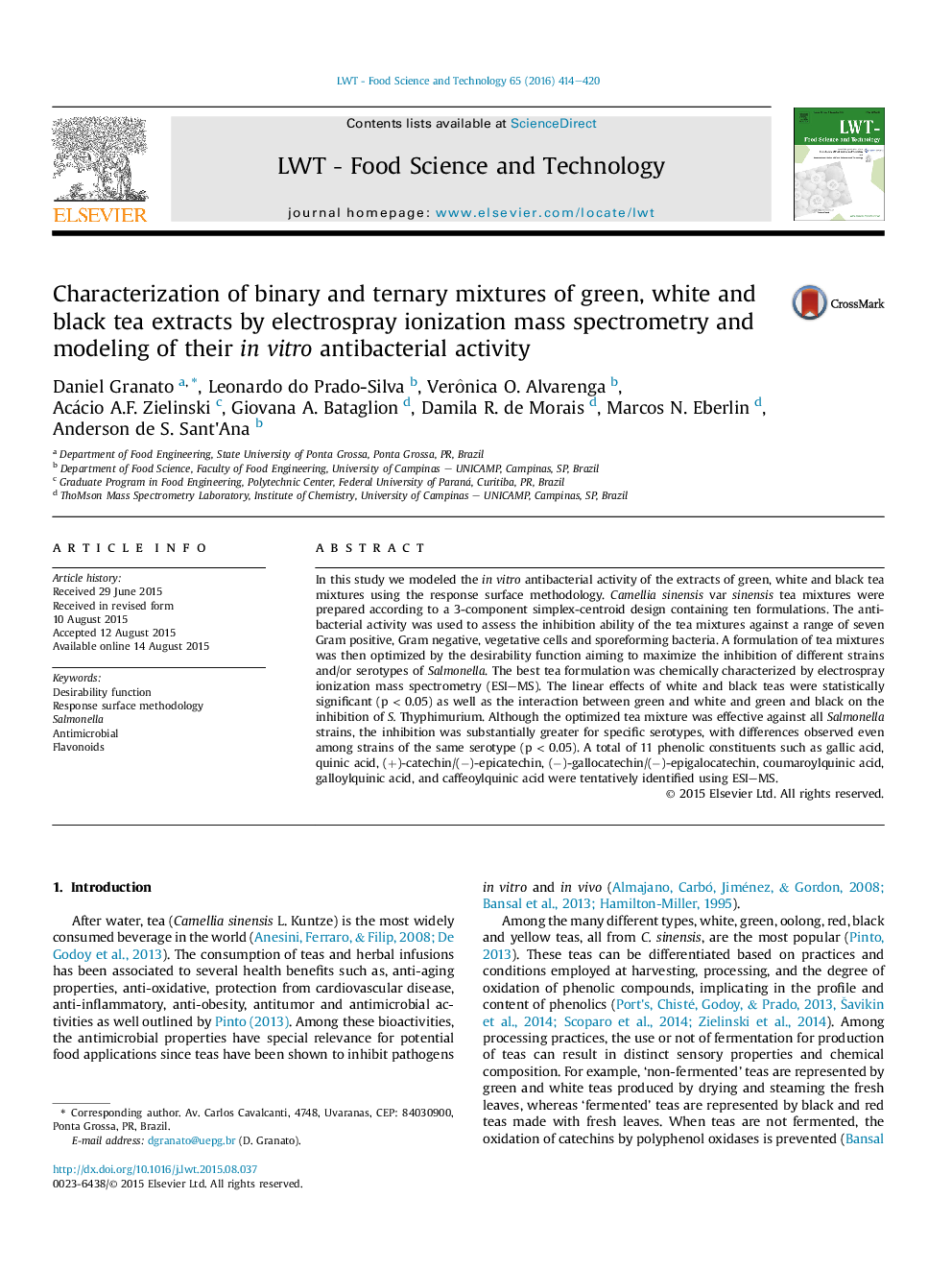| کد مقاله | کد نشریه | سال انتشار | مقاله انگلیسی | نسخه تمام متن |
|---|---|---|---|---|
| 6401569 | 1628532 | 2016 | 7 صفحه PDF | دانلود رایگان |

- The chemical and antibacterial properties of Camellia sinensis teas were studied.
- A 3-component simplex-centroid design was used to model the results.
- A tea mixture composed of green, white and black teas was optimized using RSM.
- 11 phenolic constituents were tentatively identified using ESI-MS.
- The optimized tea mixture was effective against Salmonella strains.
In this study we modeled the in vitro antibacterial activity of the extracts of green, white and black tea mixtures using the response surface methodology. Camellia sinensis var sinensis tea mixtures were prepared according to a 3-component simplex-centroid design containing ten formulations. The antibacterial activity was used to assess the inhibition ability of the tea mixtures against a range of seven Gram positive, Gram negative, vegetative cells and sporeforming bacteria. A formulation of tea mixtures was then optimized by the desirability function aiming to maximize the inhibition of different strains and/or serotypes of Salmonella. The best tea formulation was chemically characterized by electrospray ionization mass spectrometry (ESI-MS). The linear effects of white and black teas were statistically significant (p < 0.05) as well as the interaction between green and white and green and black on the inhibition of S. Thyphimurium. Although the optimized tea mixture was effective against all Salmonella strains, the inhibition was substantially greater for specific serotypes, with differences observed even among strains of the same serotype (p < 0.05). A total of 11 phenolic constituents such as gallic acid, quinic acid, (+)-catechin/(â)-epicatechin, (â)-gallocatechin/(â)-epigalocatechin, coumaroylquinic acid, galloylquinic acid, and caffeoylquinic acid were tentatively identified using ESI-MS.
Journal: LWT - Food Science and Technology - Volume 65, January 2016, Pages 414-420